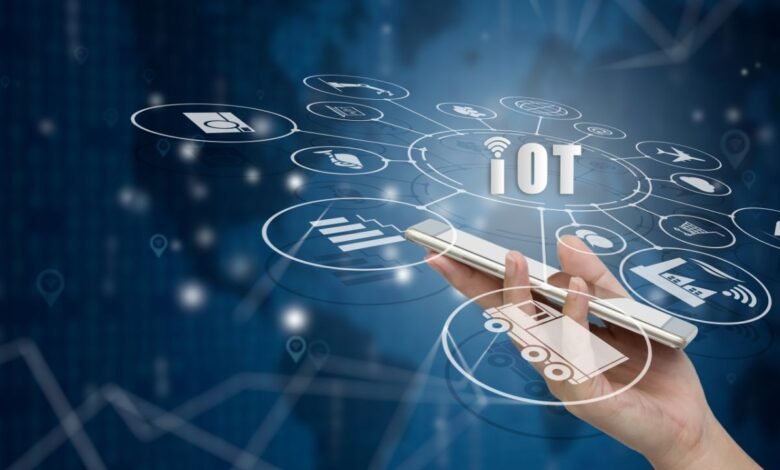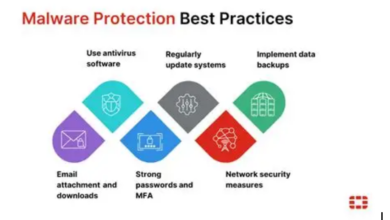Internet of Things Revolution: Connecting the Future

The Internet of Things (IoT) has been one of the most transformative technological revolutions of the 21st century. By connecting devices, machines, and systems to the internet, IoT has opened up a world of possibilities, improving efficiency, enhancing convenience, and enabling new services across industries. As we look toward the future, IoT continues to evolve, shaping how we live, work, and interact with technology. This article explores the many dimensions of the IoT revolution and its potential to connect the future.
What Is the Internet of Things (IoT)?
IoT refers to a network of interconnected devices that communicate and exchange data with each other via the internet. These devices, embedded with sensors, software, and connectivity technologies, range from everyday household items like smart thermostats and refrigerators to industrial machines and healthcare equipment. The primary goal of IoT is to create an ecosystem where devices work together to automate tasks, improve efficiency, and provide real-time insights.
The Evolution of IoT Technology
IoT has grown exponentially since its inception. Early iterations focused on connecting computers and basic devices, but advancements in sensors, wireless connectivity, and cloud computing have expanded its potential. Modern IoT systems now incorporate artificial intelligence (AI), machine learning (ML), and edge computing, enabling devices to process data and make decisions without human intervention.
Key milestones in IoT evolution include:
- The rise of smart home technology and connected appliances.
- The development of industrial IoT (IIoT) for automation and predictive maintenance.
- The integration of 5G networks, improving connectivity and reducing latency.
Applications of IoT in Everyday Life
The impact of IoT can be seen across a wide range of applications, from homes to industries and cities. Its versatility is reshaping how people interact with technology, creating more efficient and personalized experiences.
Smart Homes
IoT-enabled devices like smart thermostats, lighting systems, and voice assistants make homes more energy-efficient and convenient. Users can control appliances remotely, monitor security cameras, and even automate household chores using IoT-powered solutions.
Healthcare
IoT is revolutionizing healthcare with devices like wearable fitness trackers, remote monitoring tools, and connected medical equipment. These innovations help track patient health in real time, alert caregivers to emergencies, and improve treatment outcomes.
Transportation
Connected vehicles equipped with IoT sensors enhance navigation, safety, and efficiency. IoT also powers smart traffic management systems, reducing congestion and improving urban mobility.
Retail
IoT in retail improves customer experiences with personalized recommendations, automated checkouts, and smart shelves that monitor inventory in real time.
The Role of IoT in Industry
Industrial IoT (IIoT) is a game-changer for manufacturing, logistics, and supply chain management. By connecting machines and sensors, businesses can gather data to optimize operations, reduce downtime, and improve safety.
Predictive Maintenance
IoT sensors monitor equipment health, predicting failures before they occur. This reduces unplanned downtime and extends the lifespan of machinery.
Supply Chain Optimization
IoT devices track shipments, monitor storage conditions, and provide real-time updates on inventory levels. This ensures better supply chain transparency and efficiency.
Automation
IIoT enables smart factories where machines operate autonomously, improving productivity and reducing costs.
Smart Cities: IoT Transforming Urban Living
IoT is at the heart of the smart city revolution, where technology is used to improve quality of life, sustainability, and urban management. Smart city initiatives leverage IoT to address challenges such as traffic congestion, energy consumption, and public safety.
Traffic Management
IoT-powered traffic systems use sensors and AI to optimize traffic flow, reduce accidents, and minimize pollution.
Energy Efficiency
Smart grids and IoT-enabled energy meters help monitor and optimize electricity usage, reducing waste and lowering costs.
Public Safety
Connected surveillance systems, emergency response tools, and disaster management technologies enhance safety in urban areas.
Challenges in IoT Implementation
Despite its potential, IoT faces several challenges that must be addressed for widespread adoption.
Security Concerns
With billions of devices connected to the internet, IoT systems are vulnerable to cyberattacks. Securing these devices and their data is a top priority for developers and businesses.
Interoperability Issues
Devices from different manufacturers often struggle to communicate due to a lack of standardization. Creating universal protocols is essential for seamless integration.
Privacy Risks
The extensive data collected by IoT devices raises concerns about privacy and misuse. Transparent data policies and regulations are crucial to maintaining user trust.
The Future of IoT
The future of IoT is bright, with continuous advancements set to expand its capabilities and impact. Emerging technologies such as edge computing, AI, and blockchain will play significant roles in shaping the next generation of IoT solutions.
Edge Computing
By processing data closer to the source, edge computing reduces latency and improves the efficiency of IoT systems. This is especially important for applications like autonomous vehicles and healthcare devices.
AI Integration
AI enables IoT devices to analyze data and make intelligent decisions. This combination will drive innovations in predictive analytics, automation, and personalization.
Blockchain for IoT
Blockchain technology can enhance IoT security by providing decentralized and tamper-proof data storage. This will be particularly useful for supply chain transparency and device authentication.
FAQs
1. What is the Internet of Things (IoT)?
The Internet of Things (IoT) refers to a network of connected devices that communicate and exchange data over the internet. These devices use sensors and software to automate tasks and provide real-time insights.
2. How does IoT impact daily life?
IoT improves daily life through smart home devices, wearable fitness trackers, connected vehicles, and more. It enhances convenience, safety, and efficiency in various aspects of life.
3. What are some challenges of IoT?
Challenges include security vulnerabilities, interoperability issues, and privacy concerns. Addressing these is essential for IoT’s widespread adoption.
4. How does IoT benefit businesses?
IoT helps businesses optimize operations, reduce costs, and improve efficiency through predictive maintenance, supply chain tracking, and automation.
5. What is the role of AI in IoT?
AI enhances IoT by enabling devices to process and analyze data, make intelligent decisions, and improve automation and personalization.
6. What does the future of IoT look like?
The future of IoT includes advancements in edge computing, AI integration, and blockchain technology, driving innovation across industries and improving device capabilities.



